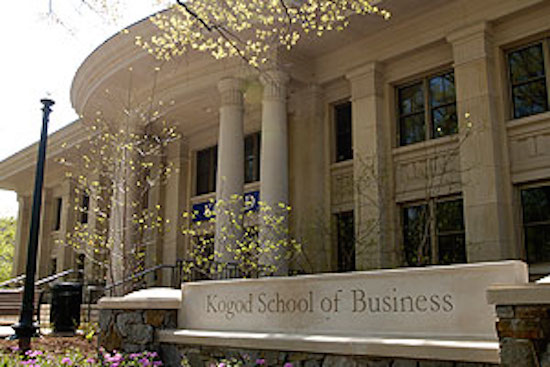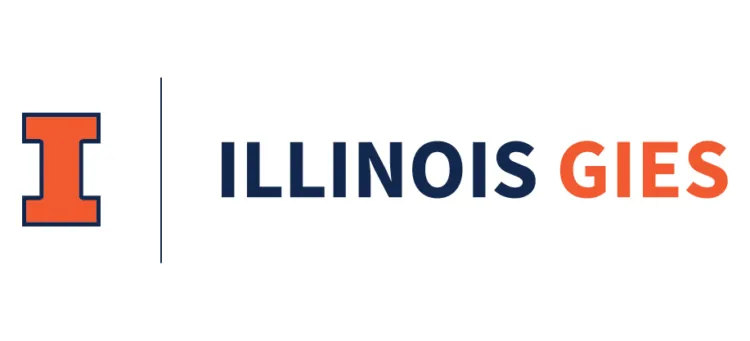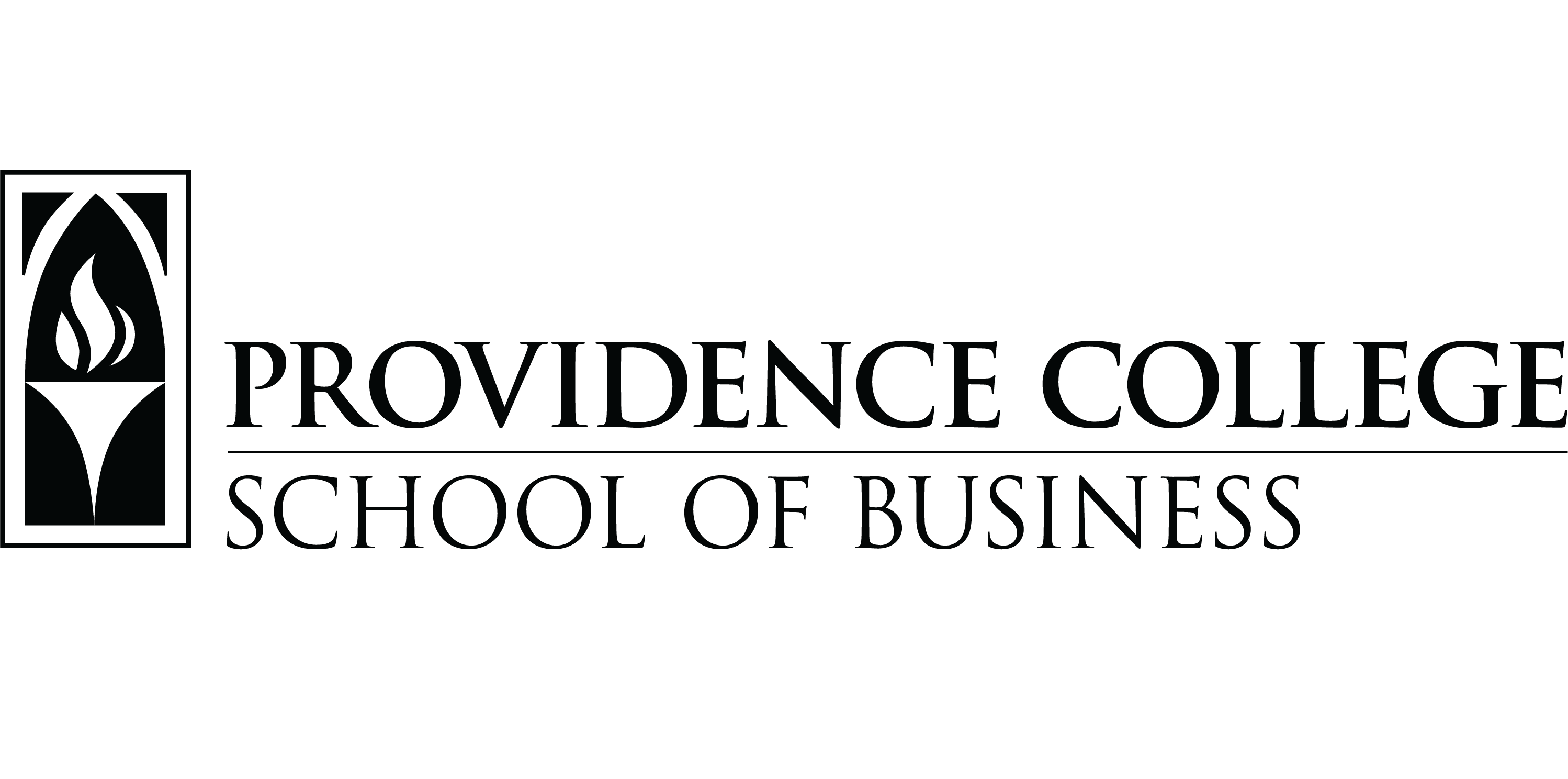
American University’s Kogod School of Business
Hizkia Widjaya grew up in Indonesia and moved to the U.S. to attend the Albers School just as his brother was finishing his undergraduate studies at Seattle University. To prepare for the move, his parents sent him to an international high school back home that operated on an international curriculum. Unlike other Indonesian schools, Widjaya says he had to work on more case-based assignments and had more presentations rather than exams that required note memorization. He says the experience helped him ease into the teaching and learning methods at Albers.
However, being prepared for class is one thing, being prepared for life is another. “First day of school was nerve wracking for me. I was afraid of getting lost on the campus, and saying the wrong thing when meeting new people, but, since Seattle University has a lot of international students, the professors, counselors, and classmates are already accustomed to it,” Widjaya, who was 18-years-old when he arrived in the U.S., recalls. By asking lots of questions and having classmates and faculty who were welcoming and comfortable answering the simplest of questions from international students, he says the school made him feel right at home.
Widjaya added that it was common for international students to group together, as they shared feelings of isolation from their communities and went about discovering life in America together. He admitted having a little difficulty making friends who were neither Indonesian nor from another country, but eventually took a proactive stance and began initiating group work and discussions with different classmates before asking to spend time with them outside class.
“I was fortunate enough that the local students were very friendly that they would ask me to come to hang out after class for a cup of coffee or dinner. After I built that relationship, near finals week, I would gather a group of them and ask if they wanted to have a study group to share notes and study together,” he says.
TECHNOLOGY PLAYING INCREASING ROLE IN BUILDING FAMILIARITY ON CAMPUS FROM AFAR
In many instances, schools also have systems of support established to help international students assimilate and build friendships. At Kogod, Ali says she opted into a program where she had one class per week with all her dorm floor-mates even before arriving at the school. The program not only helped her settle in with a consistent group of people who she considers her closest friends still today, it also created a sense of belonging for her as they studied and did their homework together.
There are many ways in which international students at Kogod are also encouraged to share their experiences to help their classmates understand the experiences and environment that made them who they are.
“Something that many university community members remain cognizant of is not asking a student to be the spokesperson for their nation, culture, or other aspect of their identity,” Popova explains. “Inherently, our small class sizes are conducive to conversations about identity and history and students are encouraged to share what or if they would like to.“
Through the Kogod Student Ambassador program, international students are also encouraged to interact with prospective students to give them tips on applying for admission, classroom experiences, and what they’ve learned about U.S. or campus culture so far. While many international students may not be able to visit the campus or join in pre-admission activities due to cost of travel and other commitments, the advancement of technology means that schools can connect interested students living abroad with current students with similar backgrounds via Skype, Whatsapp, Facetime, or a phone call.
NAVIGATING BASIC ISSUES THAT CAN BECOME COMPLICATED
Access to immediate communication is pretty important for most of us, but for international students, reliable connectivity is essential and often critical for their emotional health and other practical reasons. As they settle into their new lives without little familiarity, connectivity can often mean the difference between potential depression and a thriving.
Beyond reaching out to family and friends to feel a sense of familiarity by speaking a childhood language and staying in touch with their siblings and parents, there are many other reasons international students find themselves in need of immediate communication with their family. Having grown up outside the U.S., they may need to provide original copies of birth certificates and educational transcripts that might have been left at home or need emergency funds. Snail mail is often not an option as the quickest delivery usually costs too much, and the most affordable postage rate can take up to four months.
When Ali first arrived in D.C., she knew she needed to be able to communicate with her immediate family in Jeddah, Saudi Arabia and her extended family in India. But without an understanding of the subtle differences between the service provider coverage areas, nuances of plans available and fine prints that local students are likely familiar with, she didn’t know where to start.
She survived the first week without a SIM card in her Blackberry phone, and in the second week, she had made a new friend who brought her to Best Buy where she got a working SIM card. There, she also learned that unlike her friend, she couldn’t be on a “family plan,” for more affordable service, and had to take on a more expensive individual plan instead. This is yet another small knot that makes life for international students a little more troublesome and a more costly.
“I think the one thing I wish I had was more practical assistance (from American University),” Ali, who ended up picking a pricier plan with unlimited data and talktime to make sure she was always connected, says. “I was very close to my family, so my parents tried to make sure they talked to me everyday since I was alone or didn’t have other family in the area. They used to stay up late or wake up extra early their mornings to connect with me. Being new in the country, I would have loved it if I had more information on which phone plan to select, which financial services and banks to have accounts with as a student.”
THE IMPORTANCE OF FINDING A GOOD, RELIABLE BANK
The usual banking frustrations also become exacerbated for international students as they often need a way to be able to receive funds from their family without being charged too much for the movement of money. In general, international students do not receive financial aid, and sometimes pay school fees that are more than double the in-state tuition.
“It is so important to have a good bank, and one that has super low or almost no foreign transaction fees,” says Ali, who finally chose Capital One because there was a branch on campus. “I think almost $50 to $100 was deducted every time my dad sent me money, and as a student, that meant a lot. For locals, they just used their parents credit cards or something and got away with it. I didn’t even have the liberty to use my dad’s credit card in America.”
As international students enter the country with no credit report, landlords also often ask for double the usual deposit amount as reassurance, and back records with funds to prove their ability to pay their rent on time. In many ways, money in the bank is the only way for an international student to constantly prove that they should be allowed to stay in the country and students constantly feel vulnerable.
Need a Job, Need a Sponsor
Another issue schools are attempting to help international students with: Employment. One advantage is when a school has supportive and loyal alumni who are emotionally invested in helping those who come after them succeed. Many schools have begun offering career treks, where students visit firms on Wall Street or throughout the nation, depending on their areas of interest. Ali says she didn’t have to worry much about a job because she had an offer from a Middle Eastern healthcare giant before graduating. While it was not her dream job, she says that Kogod gave her the skills and knowledge to step forward into the industry and towards other opportunities with the school’s network and connections. From her first job out of school, Ali has moved on to work with leading hospitality company Marriott International and is extremely satisfied with her job.
As for Widjaja, he has chosen to return to Indonesia to help out with his family’s transportation business as the transportation director after graduating in 2015. He says that the was “pretty clueless” about how to go about getting an internship before visiting the school’s career center, but after taking their advice on his resume and practicing and rehearsing for interviews, he received an internship off at a local Seattle startup soon after. That position led to an opportunity for contract work with Amazon as part of the North American Transportation team as a transportation analyst, and later with ski company K2 Sports as a planning clerk.
“At Seattle University, we were encouraged to embrace and apply our different backgrounds in our discussions,” Widjaya says. “One of the most important things that I learned from my time at Seattle University is to be open to hear other views, and be critical yet neutral.”
(See the following page for the entire list of international students at the top business schools.)
THE 2017 P&Q RANKINGS SERIES:
WHARTON TOPS POETS&QUANTS’ BEST UNDERGRADUATE BUSINESS PROGRAMS OF 2017
2017 RANKINGS REPORT CARD: HOW ALUMS GRADE THEIR BUSINESS SCHOOLS
B-SCHOOLS WITH THE BEST COLLEGE EXPERIENCE
SCHOOLS THAT HELP YOU GET THE JOB YOU REALLY WANT
WHERE B-SCHOOL GRADS RACK UP THE MOST DEBT
AVERAGE SATs AT THE TOP BUSINESS SCHOOLS











Questions about this article? Email us or leave a comment below.